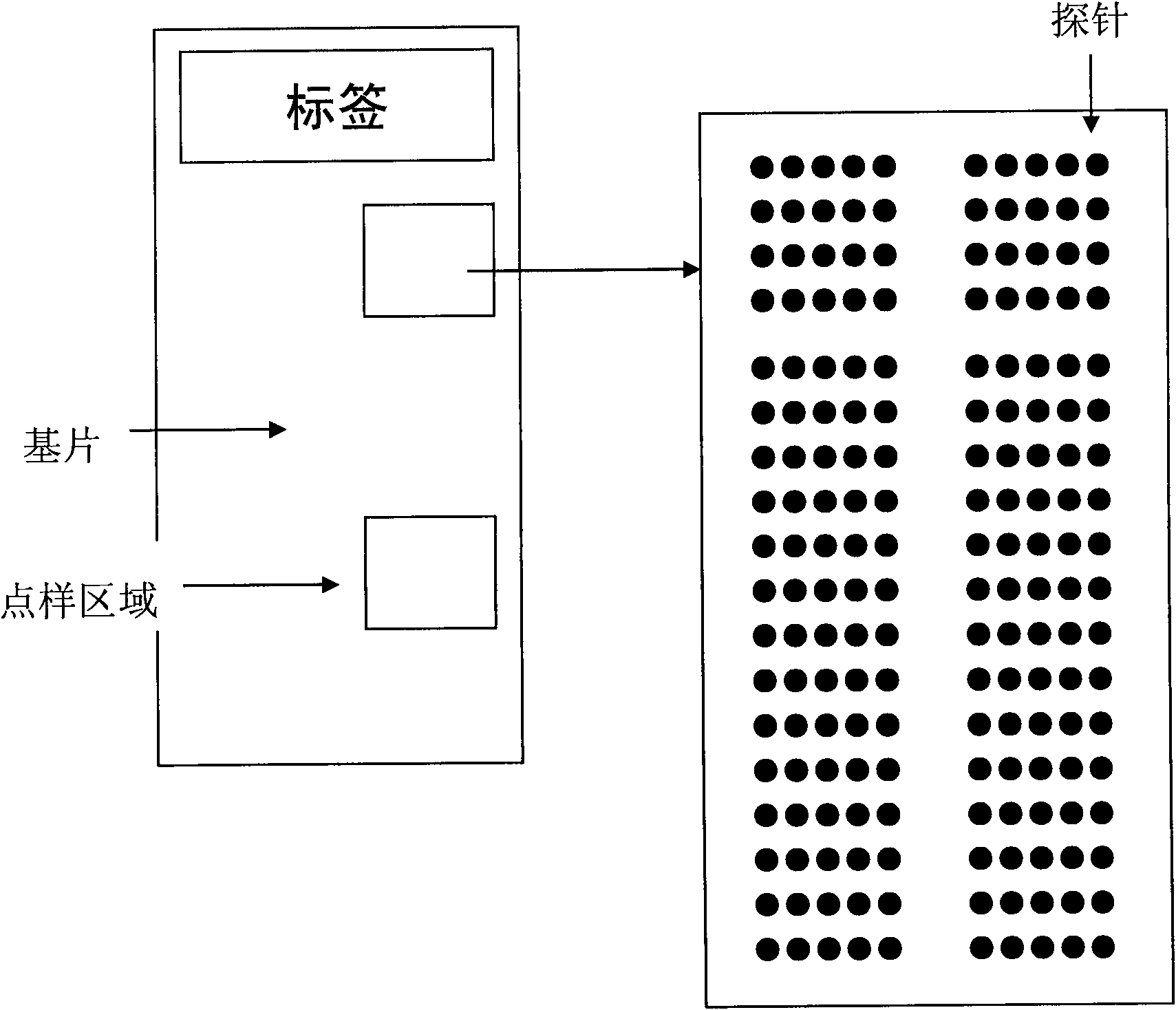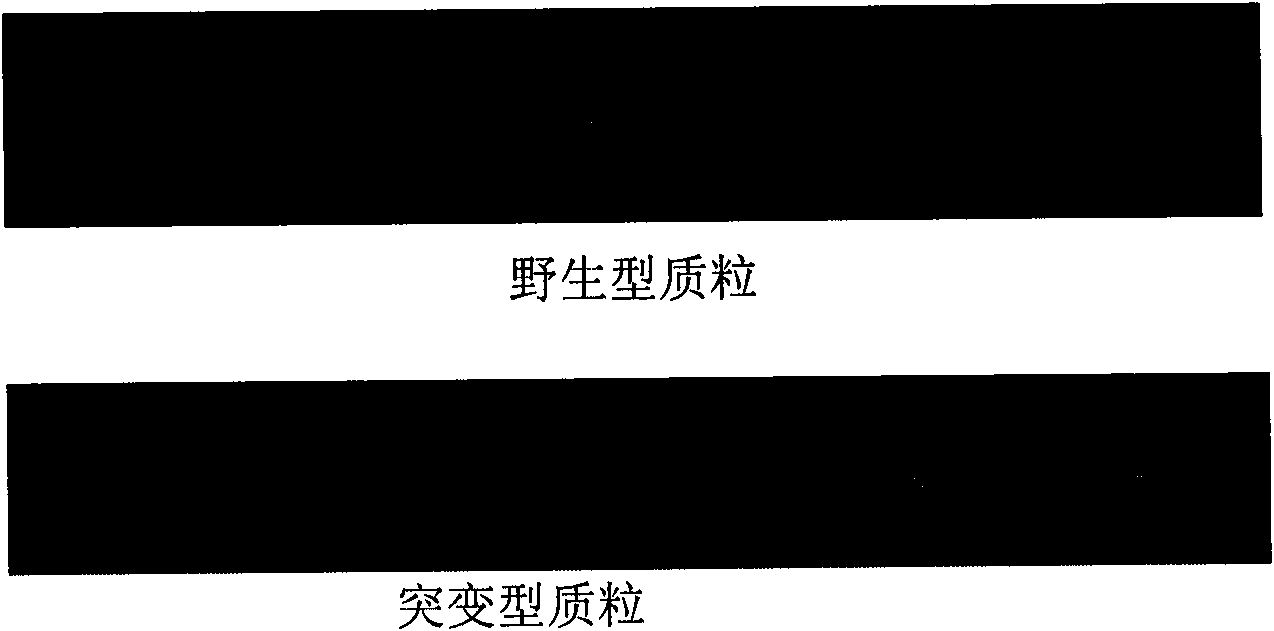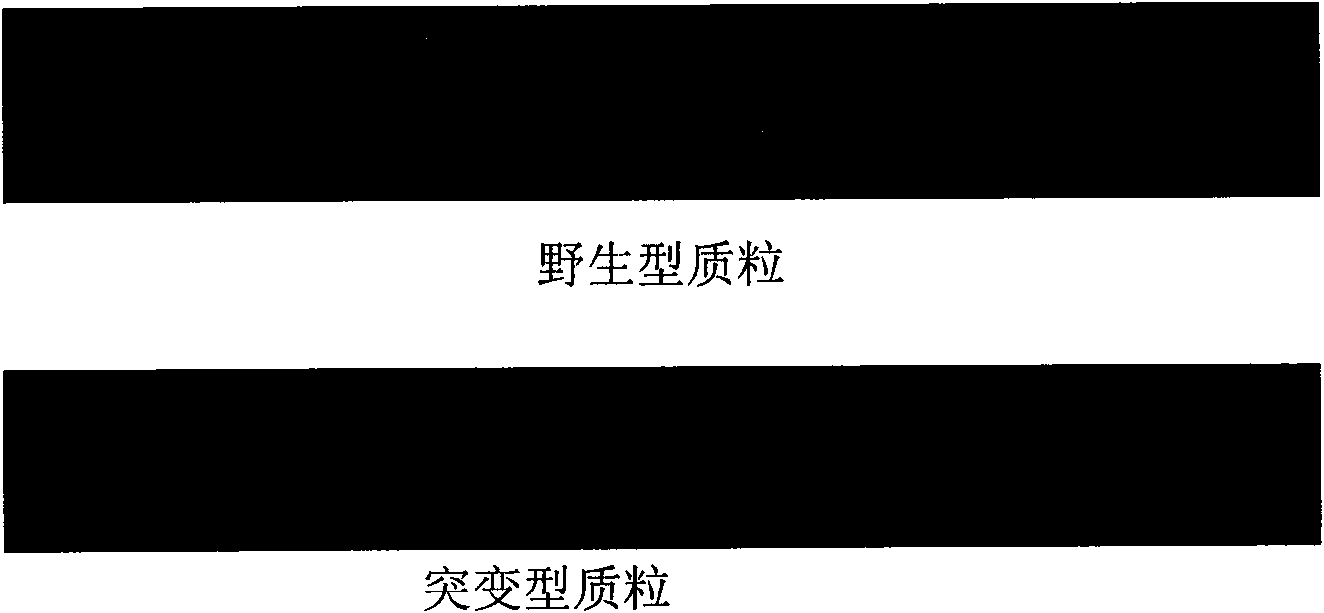Gene chip used for detecting related gene mutations of malignancy individual medications and application thereof
A technology for gene chips and malignant tumors, applied in the field of gene analysis and detection products, can solve problems such as disclosure of gene chip technical solutions, detection of gene mutation sites related to non-anti-tumor drug response, etc.
- Summary
- Abstract
- Description
- Claims
- Application Information
AI Technical Summary
Problems solved by technology
Method used
Image
Examples
Embodiment 1
[0059] Example 1: Preparation of a chip detection system for gene mutations related to individualized medicine for malignant tumors
[0060] 1. The main raw and auxiliary materials and equipment used for preparation (as shown in Table 5)
[0061] table 5
[0062] Reagents and equipment
place of origin
Reagent purity / concentration
Blank Ultraflat
Shanghai Baiao Technology Co., Ltd.
/
Aminosilane reagent
Acros (United States)
99wt.%
Acros (United States)
25wt.%
95% ethanol
Shanghai Chemical Plant
Analytical pure
Glacial acetic acid
Shanghai Chemical Plant
Analytical pure
NaBH 4
Shanghai Chemical Plant
Analytical pure
Na 2 HPO 4
Shanghai Chemical Plant
Analytical pure
K H 2 PO 4
Shanghai Chemical Plant
Analytical pure
Na 2 CO 3
Shanghai Chemical Plant
Analytical pure
NaHCO 3
Shanghai Che...
Embodiment 3
[0122] [Example 3] Comparison of hybridization effects of probes with different base numbers
[0123]In the present invention, when the probe of the sequence shown in SEQ ID NO.1-48 is actually used, a continuous 14-25 base sequence can be selected to synthesize the probe. The following experiments are designed to prove the difference in the number of bases and The sensitivity and specificity of the results are not affected.
[0124] The following mutant and normal probes of different lengths were synthesized for GSTP1*B:
[0125] Wild-type probe I (13th to 26th base sequence of SEQ ID NO.1, 14 bases in total)
[0126] 5'-gggaga gtatttg-3'
[0127] Mutant probe I (the 13th to 26th base sequence of SEQ ID NO.3, a total of 14 bases)
[0128] 5'-gggaga gtatttg-3'
[0129] Wild-type probe II (12th to 30th base sequence of SEQ ID NO.1, 19 bases in total)
[0130] 5'-tgagggaga gtatttgca-3'
[0131] Mutant probe II (12th to 30th base sequence of SEQ ID NO.3, 19 bases in t...
Embodiment 4
[0139] The above description of the present invention does not limit the present invention, and those skilled in the art can make various changes and adjustments according to the present invention, as long as they do not depart from the spirit of the present invention, all should belong to the scope of the appended claims of the present invention. [Example 4] Negative quality control probe and positive quality control probe design scheme
[0140] In the present invention, for the actual use of the probe of the sequence shown in SEQ ID NO.49-71, continuous 14-25 base sequences can be selected to synthesize negative quality control probes at each site, and SEQ ID NO. 81 were used as positive quality control probes. The following experiments are designed to prove that the selection of the above sequences as negative quality control probes and positive quality control probes can indeed play a role in controlling the hybridization process.
[0141] Design wild, mutant and negative...
PUM
 Login to View More
Login to View More Abstract
Description
Claims
Application Information
 Login to View More
Login to View More - R&D
- Intellectual Property
- Life Sciences
- Materials
- Tech Scout
- Unparalleled Data Quality
- Higher Quality Content
- 60% Fewer Hallucinations
Browse by: Latest US Patents, China's latest patents, Technical Efficacy Thesaurus, Application Domain, Technology Topic, Popular Technical Reports.
© 2025 PatSnap. All rights reserved.Legal|Privacy policy|Modern Slavery Act Transparency Statement|Sitemap|About US| Contact US: help@patsnap.com



